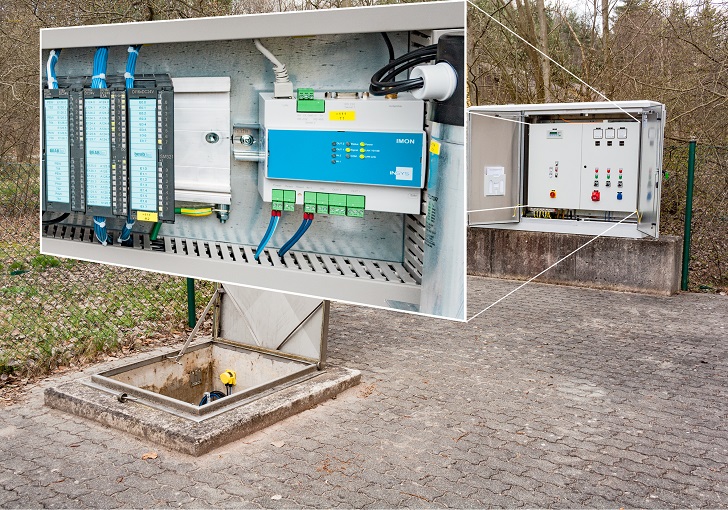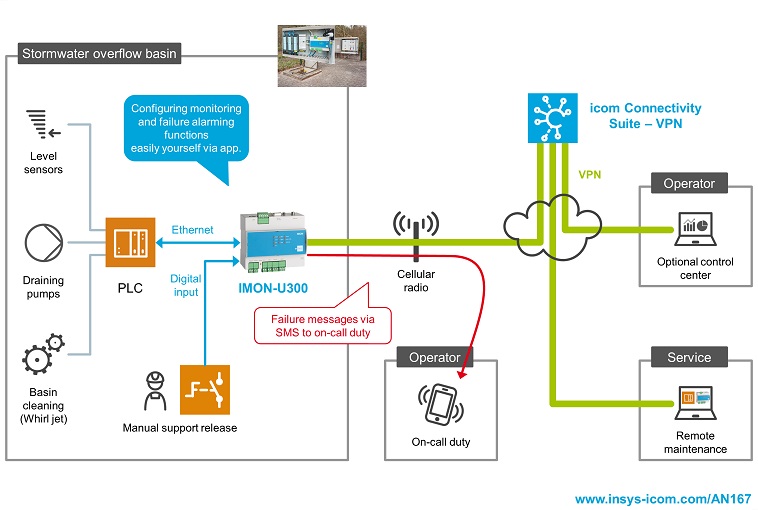

Pumps use 20% of the world’s energy and can contribute to up to 50% of a plant’s energy consumption. Monitoring and using pumps more effectively are beneficial ways of reducing power usage and overheads. Here Anna Wels, vice president Market Unit icom for INSYS, explains how industrial routers can be used to help monitor and optimise pumps.
Manufacturers and operators understand that pumps are central to a large amount of applications. A faulty pump can have disastrous effects, which can halt entire production lines or have dire consequences on the surrounding environment. As such, having an effective pump monitoring system is key.
However, while data collection has become relatively inexpensive, transmitting it via mobile connections, storing it and analysing it can prove costly. Being able to bring the analysis closer to the application can reduce costs and condense time to action. This sort of application is called edge computing; where computations are performed on distributed device nodes before they are transmitted. Implementing edge computing is a great way of streamlining processes, regardless of whether it is in a large facility or a smaller, isolated location.
Bearing the rain Location can also cause a number of impacts on the system in question. For instance, sewer and rainwater systems can easily overflow during heavy rain, which can create hazardous situations and damage water treatment facilities. To prevent this, at some facilities in Germany, for instance, excess sewer water is syphoned out of the main water system into overflow basins during heavy rain periods. The basins hold the water and then pump it back into the system once the rain has stopped.
While this system decreases the stress on water treatment facilities, it does pose some issues. The basins are in isolated remote locations, meaning that information must be transmitted to a central location before instructions can be issued, sometimes delaying response times.
Maintenance is also difficult, because crews must travel long distances to reach the location. It is imperative that the pumps are rigorously monitored, as their failure could cause high levels of environmental damage. In order to fix these issues, the national German water board turned to Insys icom.
Industrial routers can be installed with monitoring apps that can analyse data and be programmed to send commands to the system or to remote locations if certain criteria are met. The router, therefore, can securely send data generated by the system to a central location and can also carry out on site analysis.
In the case of the storm basins, Insys icom industrial routers were installed to monitor the pumps. They were also programmed to send a SMS to the maintenance team and the central command station if the router detected a flaw in the pump system. This means that maintenance crews could be dispatched to fix the pump before it becomes critical, averting potentially devastating environmental damage.
Multiple pump monitoring Most systems, however, don’t simply have a small number of pumps on site, but are instead larger structures with many pumps working in different conditions. In these situations, more process control and optimisation is required to ensure that pumps are running smoothly and efficiently.
Many centrifugal pumps are known to have up to 30% overcapacity in power compared to the required levels for their application, yet this excess of power leads to wasted energy. At the same time the cost of downtime in manufacturing environments is continuing to grow. In fact, market analysts Accruent report that unplanned downtime costs industrial manufacturers an estimated $50 billion each year.
As such, it is vital for plant operators to have systems in place that can monitor pumps to ensure they are running optimally as well as supplying information to avoid unplanned downtime. These days, most pumps are equipped with smart sensors that collect information from the pump and then relay it to a supervisory control and data acquisition (SCADA) system that analyses the data.
However, many traditional SCADA systems are remote, meaning that there is a delay between the data being sent and the analysis providing insight. Industrial routers now have the processing power to use edge computing functions. This means that maintenance teams or SCADA systems can be directly notified when the health of a system starts to decline, allowing them to act well before the situation becomes critical. It is also more cost effective because less data has to be transmitted due to processing the raw data closer to the point of creation.
Smart Box For example, Insys routers can be installed with the icom Smart Box, this is a Linux virtualisation-based environment in which users can install Linux containers that can carry out SCADA level analysis of industrial data. Using routers in this fashion will also improve the optimisation potential of a plant. Routers with the icom Smart Box can be installed with Linux containers that run a host of different functions such as optimisation analysis algorithms, allowing for constant improvements.
Pumps are a crucial part of many industrial and critical infrastructure systems and secure access is vital. Being able to securely monitor them using routers instead of relying solely on remote SCADA systems can simplify the process of optimisation and control. Industrial routers are a flexible solution to this challenge as they can be adapted to be used in both industrial production and service systems to great effect.
In one example, a wastewater system in Germany required protection from unauthorised external intervention or manipulation. By using the INSYS Smartbox, only authorised personnel can activate the key switch on the router. Because it uses its own virtual private network, configured during a quick start up, the customer benefits from secure remote access, while protecting vital assets.
So, whether users are thinking of kick-starting their digitalisation initiative or are looking to implement more edge computing applications to increase the agility of their pump systems, the answer could be closer to their pump system than they think.






